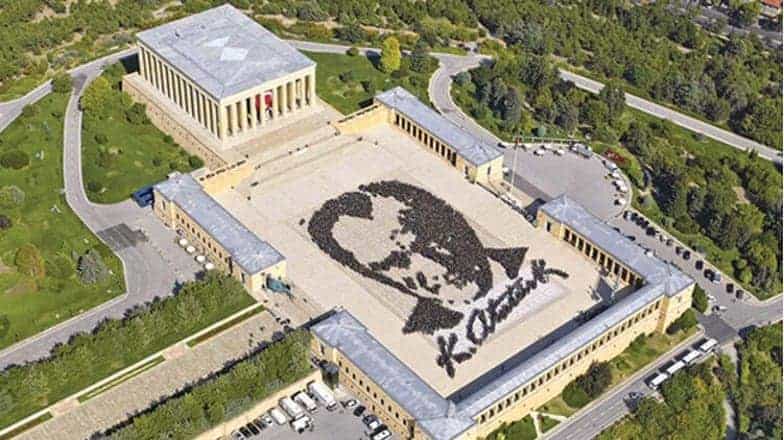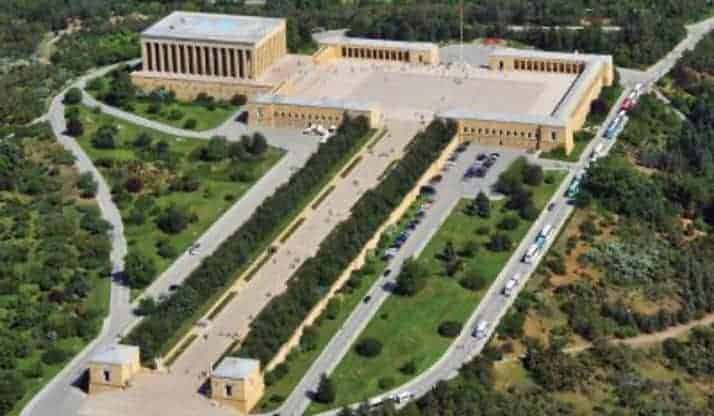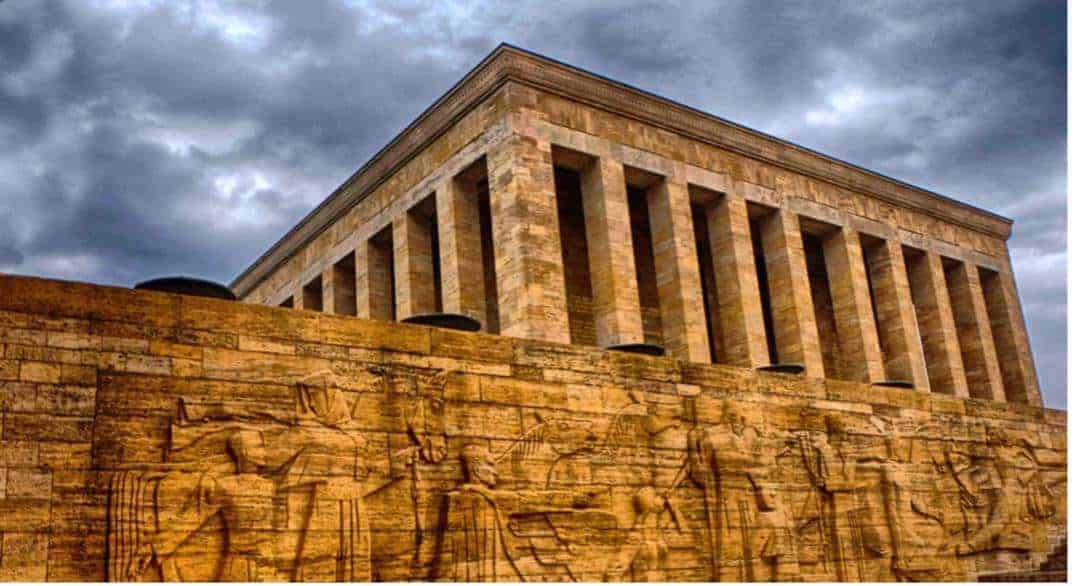Art Exhibition Essay: Anıtkabir
-
Emma Lee
- November 28, 2022

Exhibition Critique: Anıtkabir
Art Exhibition Essay: Introduction
The idea of exhibiting or building a museum itself stems from the individual expressions of artists and sophisticated intellectuals. However, there are certain exceptions, favoring both the art, aesthetics, architecture and commemoration. Anıtkabir (literally, “memorial tomb”) is the mausoleum of Mustafa Kemal Ataturk, the founder of the Modern Republic of Turkey. The museum tomb is situated in the capital city, Ankara, and “was designed by architects Professor Emin Onat and his team, who were selected from 48 others from several countries in a worldwide contest,” organized by the then government (“Ataturks Museum”; Wilson 7). In this assignment, the background, critique, and analysis of the historic museum tomb, Anıtkabir, has been presented. The paper offers insights into the purpose, perspective, evidence, analysis, core values, decision-making, organization, and conventions.
Body Paragraphs
The intention behind building such a museum-tomb was to commemorate Ataturk (literally, "father of Turks"), who was the leader of the Turkish War of Independence (Wilson 6). Not only founded the Modern Republic, but Ataturk also developed the Republic with modern reforms (e.g., women's rights to vote, Latin alphabet) long before many European nations. Today, there are more than fifty memorials of Ataturk in many countries, including the U.S., Germany, Brazil, and the U.K., and he is considered one of the most exceptional and visionary leaders of the 20th century (Wilson 12). One can readily interpret the need and impulse of Turkish citizens building such a vast, architectural, and meaningful tomb museum in the capital, with the whole city view at all angles, on a 750,000 m2 forest land, just like their founder adored the nature.
Anıtkabir is a museum of arts, history, architecture, and the womb of a great leader. From the architectures’ perspective, one can readily sense the commemoration and attribution to the great leader as there are four different parts of the museum; the Road of Lions, the Ceremonial Plaza, the Hall of Honor (tomb and huge blocks), and the Peace Park that surrounds the museum, which is visually referenced to his determination and courage, respectability, commemoration, and Ataturk's passion for nature and peace, respectively. The Peace Park is a linguistic and visual reference to his character, as can be understood from his famous quote, "Peace at Home, Peace in the World."

A bird's eye view of a part of Anıtkabir and silhouette of Ataturk made with black-dressed Turkish citizens
The site can be merely defined by “a Turkish architectural style called the Second National Architectural Movement” (“Ataturk Mausoleum,” para. 7). In terms of specific photographic evidence, blocks used in the museum are composed of marble and travertines, specifically from different corners of the country. The two huge blocks supporting the Hall of Honor are 40 tones each and describing elements of the style of the ancient Hittite Empire. According to Wilson, the room “with the sarcophagus of Atatürk’s tomb has an octagonal plan in Ottoman and Seljuk architectural styles, and its pyramid ceiling is inlaid with gold mosaics (27).

The Road of Lions and the Hall of Honor
In this vast museum and exhibition, the architects seem to reflect the cultural traits, history, and architecture of the nation by simultaneously commemorating their founding father. The tomb is also surrounded by an underground museum depicting the history, art, aesthetic, reforms, and revolutions of the nation in such an architectural-chronological formation that the visitors reach to the tomb after seeing all the history, art, and architecture. In other words, the formation of architecture merely enables visitors to experience the chronological timeline of the past and creativity of a nation, along with the personality of Ataturk, and finally, visitors end up in the entrance of the Hall of Honor, where the tomb is situated.

Architectural evidence in Anıtkabir walls (arguably Hittite patterns)
The museum's primary value and theme are expressing the gratitude and respect to the founder by exhibiting the values, architecture, and history of the nation ("Ataturk's Museum"). In this sense, one can see that the architectural elements such as lion statues, the Peace Park, and the chronological underground museum are designed to value core values. Also, specific decisions by the architect Emin Onat were made; for instance, he decided to use domestic marble and travertines from various corners of the country to highlight the leader's comprehensive approach; that is, to express that he was the leader of every individual in the country regardless of race, gender, age, or belief, just as he decided to name the Peace Park to attribute the love of nature and peace.
Art Exhibition Essay: Conclusion
After all, Anıtkabir is a collective exhibition of a nation’s emotional commitment, respect, and gratitude to its founding father. The museum includes many historical, aesthetic, mythological, and architectural elements that are all correlated to each other to convey each part of four. Chronologically, the journey starts from the Roads of Lions, museums and exhibitions, the Hall of Honor, and finally the Peace Park, just as Ataturk always said before dodging the second World War, "Peace at Home, Peace in the World."
References
“Ataturk's Museum and Unknown Features(Anıtkabir)(English/Turkish).” Steemit, 2018, steemit.com/travel/@carleone/ataturk-s-tomb-and-unknown-features-anitkabir-english-turkish.
“Ataturk Mausoleum (Anitkabir): PlanetWare.” PlanetWare.com, 2017, www.planetware.com/ankara/ataturk-mausoleum-tr-an-aam.htm.
Wilson, Christopher Samuel. Beyond Anıtkabir: the Funerary Architecture of Atatürk: the Construction and Maintenance of National Memory. Routledge, Taylor & Francis Group, 2016.
Contents
Recently on Tamara Blog

Essay on Animal Farm by Orwell – Free Essay Samples
“Animal Farm” by George Orwell is a literary masterpiece that tells the story of a group of farm animals who rebel against their human farmer and establish a socialist community based on the principles of equality and mutual respect (Orwell, 1945). However, over time, the pigs who lead the revolution gradually become corrupted by power and begin to oppress and exploit the other animals, ultimately turning the farm into a totalitarian state.

Essay on Cyberbullying – Free Essay Samples
Bullying is an aggressive behavior that is intentional and repeated, aimed at causing harm or discomfort to a person, and often takes place in social environments such as schools, workplaces, and online platforms. Cyberbullying is a relatively new form of bullying that has emerged with the widespread use of technology and the internet. Cyberbullying refers to bullying behaviors that occur online or through electronic means, such as social media, text messages, and emails.

Essay on Nature vs. Nurture – Free Essay Samples
The debate over nature versus nurture has been a longstanding topic of interest among psychologists and other scholars. The two concepts, nature and nurture, are frequently used to explain human development and behavior.

Lord of the Flies Essay – Free Essay Samples
Veterans have played a critical role in the history of the United States, serving their country in times of war and peace. Despite their sacrifices, many veterans face significant challenges, including physical and mental health issues, homelessness, and unemployment.

Why Veterans Are Important – Free Essay Samples
Veterans have played a critical role in the history of the United States, serving their country in times of war and peace. Despite their sacrifices, many veterans face significant challenges, including physical and mental health issues, homelessness, and unemployment.

American Dream Essay – Free Essay Samples
The American Dream has been a central concept in American culture for decades, representing the idea that anyone, regardless of their background, can achieve success and prosperity through hard work and determination. The concept of the American Dream is rooted in the country’s history and has been promoted in various ways, from the founding fathers’ beliefs to the post-World War II era.